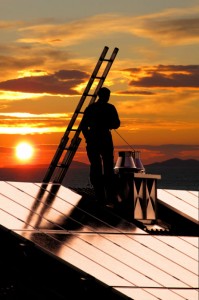Many fireplace owners believe that is they only occasionally use their fireplaces, keep their firebox clean, and are not experiencing any problems that their chimneys are in mint condition. However, this is not always the case.
While there are a number of things homeowners can do to care for their fireplaces, none of them can replace the importance of an annual chimney inspection. These inspections, done by certified professionals, are the best way to stay informed about the overall condition of your chimney system.
What is a chimney inspection?
Chimney inspections are often confused with chimney sweepings. While both have to do with the condition of your fireplace system, chimney sweepings are for the sole purpose of removing creosote, soot, ash, and other debris from your flue.
Chimney inspections, on the other hand, are meant to be an overall evaluation of all parts of your chimney. They can also be a useful tool in identifying the root cause of ongoing chimney issues such as drafts, odors, or leaks.
During a chimney inspection, a certified technician will use various tools to inspect the interior and exterior of your chimney. The tools used, the amount of time spent on the inspection, and the degree of invasiveness of the inspection will all vary based on the level of inspection.
Levels of inspection
The National Fire Protection Association standardized chimney inspections in 2000, creating three different levels of chimney inspections that each meet different need levels for different chimneys and fireplaces.
Level I: The Level I inspection are the most commonly performed types of chimney inspections. During this level of inspection, the certified technician will evaluate all accessible interior and exterior portions of the chimney for signs of damage or deterioration. This will include the flue, damper, masonry, and other parts of the fireplace.
Level II: Level II chimney inspections are more in-depth. The technician may use technology such as closed-circuit cameras or need access to attics or crawlspaces. Level II inspections are often recommended if there have been any changes to any of the fireplace components, if there are any issues such as odors or animal entry, or if you have just purchased the home and want a comprehensive assessment of the overall health of the fireplace system.
Level III: Level III inspections are the most in-depth, as well as the most intrusive. Used only where there is significant concern over the structural stability of the chimney, Level III inspections often involve the removal of some of the parts or components of the fireplace, such as removing the chimney cap or crown. In addition, parts of the walls, ceilings, or masonry may need to be removed.
Why are annual chimney inspections important?
“A chimney inspection is like an annual dental check-up,” says Ashley Eldridge, Director of Education for the CSIA. “It’s preventative maintenance that helps minimize potential hazards.”
An annual chimney inspection is the best way to know if any parts of your fireplace or chimney have been damaged during the course of the year. Often these inspections uncover minor defects that can be quickly repaired before they turn into major – and costly – problems.
If you are ready to schedule your annual chimney inspection, contact the experts at Mason’s Chimney Service today!

